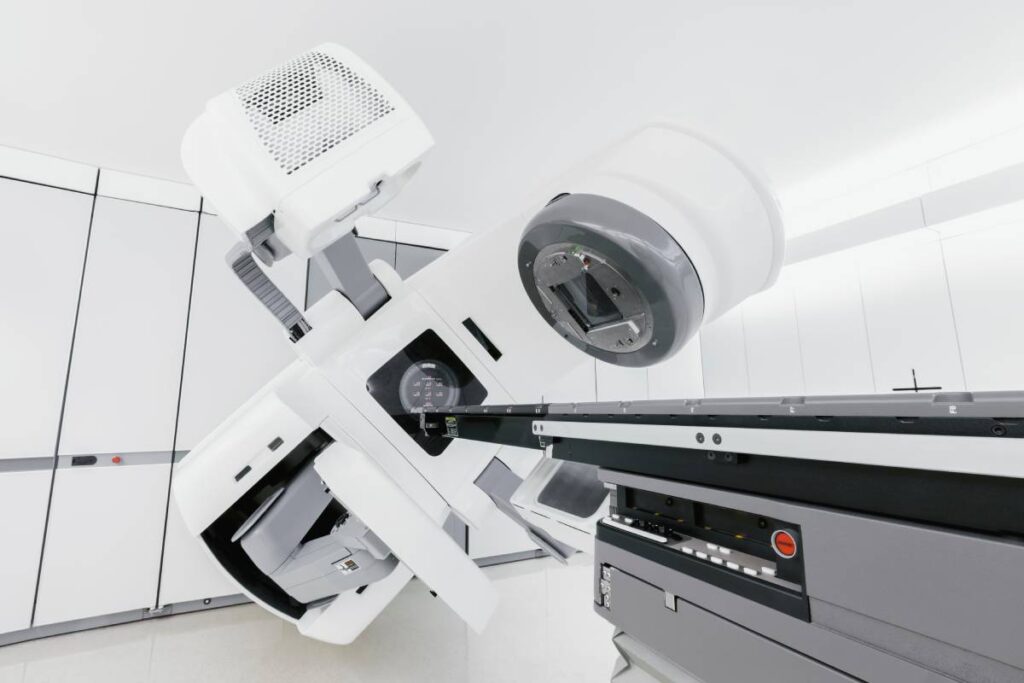Cancer treatment, including surgery, chemotherapy, and radiotherapy, results in major physiological and health changes. Impacts on everyday life can be significant and are relatively well-known. Impacts on other areas are also important. In particular, there are unique considerations for patients undergoing cancer treatment, especially radiation therapy, who need anesthesia.
Chemotherapy can damage healthy cells, resulting in side effects impacting the cardiovascular, respiratory, nervous, renal, hepatic, gastrointestinal, or hematopoietic systems 1. Anesthesiologists therefore need to pay close attention to patients receiving chemotherapy, looking for any such side effects on organ systems 2.
For example, the chemotherapy agent bleomycin can cause pulmonary damage, resulting in severe pulmonary fibrosis which could be aggravated by the administration of high concentration oxygen. In addition, anthracyclines are cardiotoxic, while platinum-based chemotherapy agents are nephrotoxic, and a number of other chemotherapy agents can incur abnormal liver function, diarrhea, and vomiting. Some anesthetic agents can have a myocardial depressant effect, which can further exacerbate the cardiotoxic side-effects of chemotherapy.
As a general rule, following the completion of chemotherapy, anesthetic agents must be considered to have long term potential toxic effects on already stressed organ systems. It is best to treat a patient as conservatively as possible, and careful preoperative assessment is essential in order to identify potential toxicity and minimize any potential complications.
Some cancer patients require surgery as part of treatment. This often results in a certain degree of inflammation, which certain targeted anesthetic techniques and drugs can be used to minimize. In addition, surgery itself may be linked to an increased risk of metastasis and recurrence of cancer. For cancer patients undergoing surgery, regional anesthesia and general anesthesia with propofol should be favored, while volatile agents should not be used in order to prevent cancer patients from perioperative immunosuppression that can increase the risk of cancer recurrence.
A fraction of patients may need to undergo intraoperative radiation therapy, which carries a whole additional set of unique anesthesia and other clinical considerations. Formerly, anesthetized patients who received intraoperative radiotherapy needed to be transported from the operating room to the location of the linear accelerator, but the advent of mobile accelerators now means that radiotherapy can be directly delivered to the patient in the operating room.
Patient safety and the precise delivery of radiotherapy remain the primary goals of intraoperative radiotherapy, presenting key challenges to anesthesiologists, whose role is multipronged. The anesthesiologist is responsible for selecting the optimal anesthetic technique to minimize any patient movement, monitoring the patient’s vital signs throughout the procedure, and ensuring that the sterile field is maintained in the operating room.
Although keeping patients in the operating room has simplified the process of providing intraoperative radiotherapy, the anesthesiologist must also remain acutely aware of any potential challenges and plan accordingly 3.
Some radiation therapy patients may require brachytherapy, involving the placement of radioactive material inside of the body, which requires specific anesthesia considerations as well. The anesthesia technique for brachytherapy depends on a number of factors, including anesthesia provider availability, the area of the body, the length of the case, and the potential need to transport the patient to a (CT/MRI) scanner 4.
Finally, a unique set of anesthesia considerations should be made for pediatric patients in particular who are undergoing radiation therapy 5. Carefully planned anesthetic considerations across both pediatric and adult patient populations is essential to ensuring the best outcomes for radiation therapy patients.
References
1. Allan, N., Siller, C. & Breen, A. Anaesthetic implications of chemotherapy. Contin. Educ. Anaesth. Crit. Care Pain 12, 52–56 (2012). doi:10.1093/bjaceaccp/mkr055
2. Gudaitytė, J., Dvylys, D. & Šimeliūnaitė, I. Anaesthetic challenges in cancer patients: current therapies and pain management. Acta Medica Litu. 24, 121 (2017). doi: 10.6001/actamedica.v24i2.3493
3. Glynn, K. M. & Riker, A. I. Anesthetic considerations for intraoperative radiation therapy. Ochsner Journal (2015).
4. Barnett, K. M., Lu, A. C. & Tollinche, L. E. Anesthesia and radiotherapy suite. Out Oper. Room Anesth. A Compr. Rev. 347–355 (2016). doi:10.1007/978-3-319-39150-2_25/COVER
5. Harris, E. A. Sedation and Anesthesia Options for Pediatric Patients in the Radiation Oncology Suite. Int. J. Pediatr. 2010, 1–9 (2010). doi: 10.1155/2010/870921
